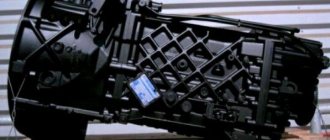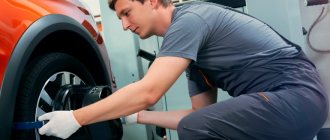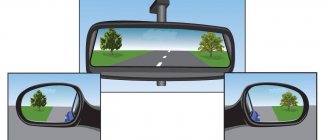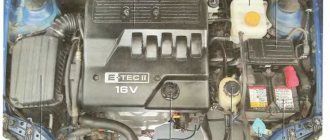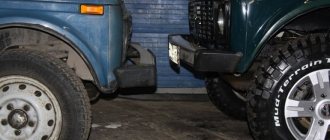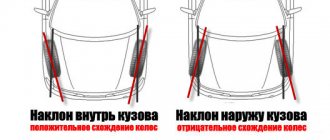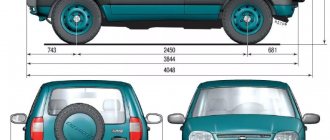What car are you the owner of? — Front-wheel drive, rear-wheel drive or all-wheel drive. Do you understand the mechanisms of a car, do you understand how its power and maneuverability on the road are justified, especially during descents and ascents? Often, the operation of cars takes place on a whim, only a part of the owners with their vehicle are on a first-name basis. An experienced and attentive driver clearly understands which part needs to be replaced as planned, whether it is necessary to rearrange the wheels, and what diagram is suitable for this. Not everyone, for example, can afford to allocate up to 20-30,000 rubles from the family budget twice a year to purchase a set of winter and summer tires. In order to save money, car owners are looking for acceptable solutions to the situation. And there may be several of them.
- “Once - yes much.” Some motorists think so and decide that it is better to buy expensive tires from a well-known brand, then you can count on quality, service, prestige and wear resistance of the product. Definitely the right decision. Firstly, premium tires are manufactured using innovative technologies, all high-level indicators are thought through, a quality stamp is given, and service life is extended. Secondly, expensive tires are a big responsibility. Of course, you can hope for their quality, and whether you can predict the road situation, whether you are able to find the ideal roadway without potholes or foreign sharp objects. There are no 100% safe roads, and any tire, be it economy class or premium, still does not last forever and is not insured against force majeure.
- “The sum does not change by changing the places of the terms.” A familiar rule from childhood. Among car owners, it is also used, only it is designated with a technical slant and sounds like this: rearranging the wheels on a car, the standard scheme is used.
- “A shirt worn to holes – still warm.” It’s practically a rag, but it’s a shame to throw it away. It may be a pity to part with your favorite clothes, but it is necessary if they no longer warm or decorate. But, of course, you can’t drive on bald tires! Unfortunately, in our society there are many reckless drivers who do not pay attention to the condition of the tires, they are not interested in rearranging the tires according to the scheme, they simply want to get to the goal in their car and are still happy that the car starts up every morning and does not refuse to carry passengers. And the fact that the braking distance has already exceeded all maximum indicators, that the car can sometimes drive, go into an uncontrolled skid - it doesn’t matter.
Automobile
There may be several ways out of the situation, but let’s pay attention to the simplest and most popular one - rearranging the wheels; the process diagram has never been complicated, and even more so, several variations are attributed to it. Choose practically without restrictions!
When is a tire rotation recommended?
Service station employees recommend paying attention to the condition of the wheels, and if impressive numbers already appear on the dashboard indicating the mileage, and it is somewhere around 5,000-10,000 kilometers, then the rearrangement of the wheels is shown, the diagram is selected as desired. You should be extremely careful if you bought a used car second-hand, because then dashing craftsmen could twist the mileage figures, hiding the true wear and tear of the mechanical “stuff” of the car that was previously put up for sale. Then you should be guided by the condition of the tread pattern. We noticed wear on the front or rear wheels, assessed them as a percentage, and decided to rotate the tires according to the scheme. The following reasons for rearranging wheels are determined:
- Uneven tire wear.
- The need to strengthen one or another pair of wheels for front-wheel drive and rear-wheel drive vehicles, respectively.
- The desire to extend the life of tires, improve their condition by temporarily changing the load level.
- Unforeseen traffic situation, emergency repair work in the field.
Thus, there are no strict recommendations on when it is worth rotating the wheels; their condition is simply assessed, time is found for the replacement procedure, and money is allocated to pay for the work, if you do not do everything on your own.
Can all tires be swapped?
There is a model range of tires that are not subject to diagonal interaxle rearrangement. For example, sports cars. They have different tread widths and can only be swapped on one axis. But this is acceptable if they do not have an asymmetrical directional tread and strict regulations for installation on a certain side.
Do not ignore the rules for rearranging wheels. By using any suitable method of interchange, you are guaranteed to extend the life of your tires. In some cases, careful operation allows you to use one set of tires for 5-6 seasons. But longer service life has also been encountered.
What you need to rotate your tires
There are tools in the trunk of any car, many of which are useful for repair work. The idea is to rearrange the wheels on a car, the diagram is supposed to be available, then the following available tools will be needed:
- Jack. A model of a powerful floor hydraulic jack is suitable, with the help of which it will be possible to lift the car and fix it, perhaps for several hours, while the wheels rotate from one axle to another.
Jack - Stand. To enhance the power of the jack and securely fix the machine in weight, it is recommended to use a stand to the jack. It can be factory equipped or can be replaced with any other durable structure, for example, a cinder block or a log block.
Jack stand - Rearrangement scheme. Determine for yourself the best option so that rearranging tires according to the scheme is crowned with success and proves in practice its profitability and correctness.
When undertaking such a painstaking procedure on your own, try to enlist the support of friends or family. There is no doubt that you will need support and help. When repairing a car, there is always something to support, serve, smoke, take out, move, substitute, and so on. The list of actions can be endless!
Depending on the number of wheels
Original transfer methods have been developed for 4- and 6-wheel vehicles (ZIL, KamAZ). It is taken into account that drivers always carry a spare tire with them.
Four wheel rotation diagram
A universal system for 4-wheeled vehicles - criss-cross: the rear ramp on the right changes places with the left one in the front of the car, the rear left one replaces the right one from the front axle.
For rear-wheel drive cars and with 4x4 drive, use the following order: send the front slopes back diagonally, the rear ones forward along their sides.
For front axle drives, the scheme is mirrored: the rear tires go forward diagonally, the front tires are thrown back on their sides.
Four wheel rotation diagram
Rearrangement taking into account the spare wheel
If the car does not have a spare tire, but a full-size spare tire, then the latter is included in the rotation scheme:
Rearrangement taking into account the spare wheel
Six wheel rotation diagram
Cars with dual rear wheels must adhere to a slightly more complex tire rotation order. There are two schemes, but the front, single, tires must be swapped on their axis:
Six wheel rotation diagram
Rearranging wheels of different sizes
If the car is equipped with ramps of different widths with a non-directional pattern, then swap the left and right elements on both axles.
Depending on the tread pattern
Based on the design of the running part, all tires are divided into symmetrical and asymmetrical. Within the groups, the division is into tires with directional and non-directional patterns.
Asymmetrical omnidirectional
This is the most popular type of tire without a directional arrow on the sidewalls.
Rotation methods to choose from:
- Universal - tires are thrown crosswise.
- Rear-wheel drive and 4WD: the front slopes go diagonally to the drive axle, the rear slopes go forward along their sides.
- The scheme for rearranging wheels on front-wheel drive cars for non-directional tires: the rear wheels go to the front axle diagonally, the front wheels go to the rear axle on their sides.
Methods for interchanging wheels are usually specified in the tire operating instructions.
Symmetrical directional
The V-shaped tread design is more often seen on winter models. The rotation is extremely simple: the front tires go on their sides to the rear axle, the rear tires are thrown onto the front.
Symmetrical omnidirectional
The procedure for transferring symmetrical and asymmetrical non-directional tires is identical. The key word here is “non-directional”; you need to focus on this feature of the drawing.
Rotation of studded or winter wheels
If you don't swap the studded tires, the toe elements fall to one side and become useless. Rotation is carried out every 6000 km, the main thing is that you cannot change the direction of movement of the tires.
Preparatory stage
Of course, you don’t have to worry about how to properly swap wheels, but simply entrust this work to specialists in a car service center. But you should remember that:
- this kind of work costs money;
- there is no guarantee that the technician will make the replacement correctly;
- You will always have to contact the same car service center.
Meanwhile, you can do everything yourself. In order to rotate the wheels technically competently, to perform all operations independently, without resorting to the services of a car service, it is necessary to carry out certain preparatory measures:
- We prepare the necessary tools: a jack, a stand, a wheel wrench.
- We place the car on a flat surface with a hard surface.
- Selecting the correct permutation scheme.
If you have a little practical experience, changing wheels from a set of tires will take 1.5-2 hours, no more.
Reviews
Motorists' opinions on the procedure.
I rotate tires twice a season. I started after I noticed that the outer side of the tread on the rear axle was eating a little. Now wear is more even and the rubber lasts longer.
I rotate the wheels on the truck every month. If you don’t do this, the rear axle wears out the tires much faster and you have to constantly buy two more tires before the replacement date.
Specialization : Graduated from the State Automobile University, worked for 20 years at GAZ-56, now I drive a Zhiguli.
Source
Rotating wheels using a spare wheel
This type of rotation allows you to extend the life of the wheels by about 20% , but in reality this method is almost never used: many modern cars either do not have a spare tire in the trunk at all, or use a small-sized “replacement tire” as one. And even if your car is equipped with a full-size spare tire, in practice it most often differs either in the tire model or the type of wheel. However, if the spare wheel is completely identical to the wheels installed on the car, then rotation in this case can be extremely useful. For ease of wheel replacement, the tread pattern type should be either asymmetrical non-directional or symmetrical non-directional. The rotation process in this case is no longer as obvious as in previous methods.
Properly lift, lubricate and do not tear. Replacing wheels according to Feng Shui
With the onset of warm days, motorists en masse switch from winter tires to summer ones. Many people do this on their own. And that’s true: the procedure is not complicated! However, having taken up its description, including talking with employees of tire workshops, we were surprised to discover: there are plenty of nuances in it! This is what we are eager to share with you.
When to change?
Do you remember that winter tires differ from summer tires not only in their tread pattern, but also in their composition, due to which their elasticity is maintained at low temperatures? Even if there is no snow anymore, winter tires will work better on cold asphalt than “stiffened” summer tires, and there is less risk of “slipping” during night frosts. Therefore, you can switch to “summer” when a stable temperature above 5-7 degrees Celsius occurs.
On the other hand, it is also not recommended to delay replacement until the summer: with an increase in temperature (both of the air and the road surface itself), the behavior of winter tires changes for the worse, which affects handling and braking distance. In addition, it is worth remembering that the use of winter tires negatively affects the efficiency and acoustic comfort of the car, so their use outside the season is simply impractical.
What do we put where?
Before removing the wheels from the car, we recommend that you immediately use chalk or a special marker to mark which axle they are on and on which side - in the fall it will be easier to figure out which wheel to put where.
Let’s not forget about rotation: there is a recommendation to periodically swap wheels diagonally, and if the “spare” is full-size, then include it in this process. The goal is to ensure more or less uniform wear on all tires. However, this rule works great in the case of simple models - you can’t just change directional and especially asymmetrical tires diagonally!
Speaking of directionality and asymmetry. When choosing which wheel to put where, do not forget to check that this is possible, and make sure that you did not make a mistake when assembling the wheels at the tire shop (although rare, such mistakes do happen).
Cheat sheet for a beginner
The following information is primarily intended for beginners. However, it would be a good idea for experienced motorists to refresh their memory. So, what is the procedure when changing wheels, what nuances should be taken into account?
We find a site without slopes with a smooth hard surface (asphalt, concrete), tighten the handbrake, put the car in gear (in the case of an automatic transmission, in “parking” mode). If possible, it would not be superfluous to install anti-roll bars under the wheels (small wooden blocks can play their role).
Using a wheel wrench or wrench, loosen the mounting bolts (nuts). We do this before the car wheels are hung. If the fasteners are soured, you can use a special or universal product like WD40: in this matter, the main thing is not to rush and not to break the threads by applying excessive force. However, sometimes you just need to apply a little more torque - for this you use a wrench with a long handle or an extension (pipe).
We install the jack under the body points provided by the manufacturer. Using other places may damage the thresholds. It is important to make sure that the jack is installed securely, that when lifting the car there are no distortions, and that the jack does not tend to jump off or move to the side. The rolling jack can move under the support point during operation.
We hang the wheel with a margin, especially if you plan to raise the second axle (since this will lead to the first axle moving down). In any case, a gap of several centimeters between the wheel and the platform is necessary in order to facilitate the removal/installation process, as well as with the expectation of possible additional downward movement of the suspension arm during the work.
Using a wheel wrench/wrench, unscrew the bolts (nuts) and put them in a dry place, for example, in a wheel cover or jack case. As a last resort, we place the bolts vertically on the asphalt so that the threaded part remains clean.
When removing a wheel, difficulties may arise if the disc is “stuck” to the hub. First we try to loosen it with our hands: we take it from opposite points (left and right or top and bottom), pull with one hand, push with the other and vice versa. If this is not enough, we try to knock the wheel off the hub by hitting it with a hand (foot) from the outside or from the inside using suitable objects at hand. However, such actions can be carried out by making sure that the car is securely on the jack. Even in this case, it would not be superfluous to be on the safe side and place a wheel under the threshold: if the car does jump off the jack, it will not be left without a support point.
To avoid problems in the future with fasteners souring and the disk sticking to the hub, you can treat these parts with a special lubricant. It is important not to overdo it, especially in the case of threaded connections, where the lubricant is applied in a very thin layer.
We install the wheel so that the holes in the disk coincide with the holes for the bolts in the hub. By pressing the disc to the hub, we make sure that nothing interferes with its tight and uniform fit.
We screw the first bolt into the upper hole and press the wheel from below with the toe: this will help avoid distortion of the disk and simplify the fastening process.
Of course, the design of the disk, hub and fasteners is such that when tightening the bolts (nuts), the necessary alignment of the wheel must be ensured. However, to achieve the best effect, it is still recommended to tighten the bolts in several passes with increasing force, using an opposite pattern (criss-cross). The final “broaching” is carried out after the car has already been removed from the jack. The main thing is not to forget about this important operation!
Don't pull
So, with all wheels of the car on the ground, it’s time to finally tighten all the bolts (nuts), ensuring reliable fastening of the disc to the hub. In this case, it is necessary to observe the moment established by the manufacturer: on the one hand, this will avoid thread failure, on the other hand, it will guarantee reliable fastening of the wheels to the hub, when the risk of loosening is minimized.
Depending on the model and make of the car, the tightening torque is in the range of 80-140 Nm; this parameter can be guaranteed to be maintained using a torque wrench. But, as practice shows, this tool is not used even at service stations and tire shops - probably even motorists who change wheels themselves do not have it. In general, in fact, the bolts and nuts are tightened by hand...
Experienced drivers and mechanics have a rough idea of how much force to apply to the key. But by and large, this knowledge boils down to the following: when tightening bolts, an ordinary person without special physical training must apply a fair amount of force to a standard wheel wrench or “cross”, without using extension cords.
We decided to check to what torque the bolts on our employees' cars were tightened. To do this, we took out a torque wrench and randomly checked the fasteners on several wheels. On my car, I tightened the bolts myself - as it turned out, with a force of 150 to 230 Nm!
Perhaps one of the reasons is that I use a long wrench against a short standard wheel wrench - that’s the “pinching”!
But on Sergei Boyarskikh’s car the bolts are also pinched: around 200 Nm versus the required 90-110 Nm! The wheels were changed in a tire shop; a station worker tightened the bolts by hand.
The same 200 Nm, which is also noticeably higher than the norm, was shown by the key on Yuri Likhuta’s car, although he immediately admitted that he always pinches the fasteners. As you can see, when tightening the bolts “by eye”, experienced drivers easily exceeded the required force by one and a half to two times!
In fact, if the fastener is not clamped tightly enough, after a while it may loosen, which can lead to the loss of the wheel. That is why it is important, especially in the case of alloy wheels, to check the reliability of the fasteners 100-200 km after “re-shoeing” and, if necessary, “pinch” all the wheels.
After tire fitting
After assembling the wheels, it takes a certain period for the tire to “shrink” onto the rim, which can result in an imbalance. It is for this reason that after 500-1000 km, it may be necessary to re-balance the wheels. In the future, balancing should be carried out every 10,000-12,000 km.
When installing new tires, you should remember that you should drive on them carefully for the first 200-300 km, since the grip of the wheels on the road will initially be reduced due to the technological lubricant with which the tires are coated during the production process.
If after replacing the wheels there is a pull to the side, then first of all you should check the pressure and correct installation of the tires (especially if they are directional, asymmetrical). But then it is recommended to check the uniformity of tread wear, try to swap the wheels (swap the rear ones with the front ones), or, as a last resort, re-align the wheels. If all these actions have no effect, the cause of the slip should be sought elsewhere (suspension, braking system, etc.).
How to store?
In a dark, cool place with a humidity of 50-60%. The optimal air temperature is about 10-15°C, but fluctuations in any direction are acceptable. If the tires are assembled onto rims, then the wheels are stacked or hung by the rim.
Tires without rims are stored differently. Traditional recommendation: vertically, preferably on special racks, with periodic changes of the fulcrum (for which the tires should be rotated every few weeks). Compliance with these simple rules ensures the performance and service life of the tires specified by the manufacturer.
Ivan KRISHKEVICH Photo by ABW.BY
Changing wheels on trucks
On the one hand, this measure is more effective for trucks, since their weight distribution along the axles is very uneven. On the other hand, it is more difficult to carry out this procedure on trucks due to the fact that the front and rear axle disks are different. You have to pay for tire fitting. We recommend weighing the pros and cons, calculating the cost of tire installation, and the economic effect of a small extension of operation. This way, you can decide whether it is necessary to replace the wheels at all?
You can partially circumvent the problem of different disks for the front and cargo axles if you change the wheels only from right to left, or vice versa, but without changing the axles. On the rear bogie of a three-axle truck, the wheels are thrown diagonally. Truck drivers have their own experience in this regard; they cover hundreds of thousands of kilometers on their trips.
Our specialists provide you with high-quality professional tire fitting services. We carry it out both in the workshop and on the road if you call for a technical assistance vehicle. Our workshops are located in the Northern Administrative District of Moscow, where you can drive along Korovinskoye or Dmitrovskoye highway.
How much does it cost to rotate wheels?
The good news is it's inexpensive. This small investment comes back to you in the form of long tire life and continued vehicle safety and performance. In the long run, the cost of rotating your tires periodically will be only a fraction of what you would have to spend on new tires due to premature wear. Tire shops also often offer tire rotation services at a discount for regular customers or from time to time offer to do it for free. So contact the tire shop that installed your tires first - in some cases, your cost for tire rotation may be zero.
Helpful Hint: Don't forget to label your wheels with numbers and keep your tire rotation data and receipts. If you ever need to have your tires replaced under warranty, having these records will improve your chances of success.
